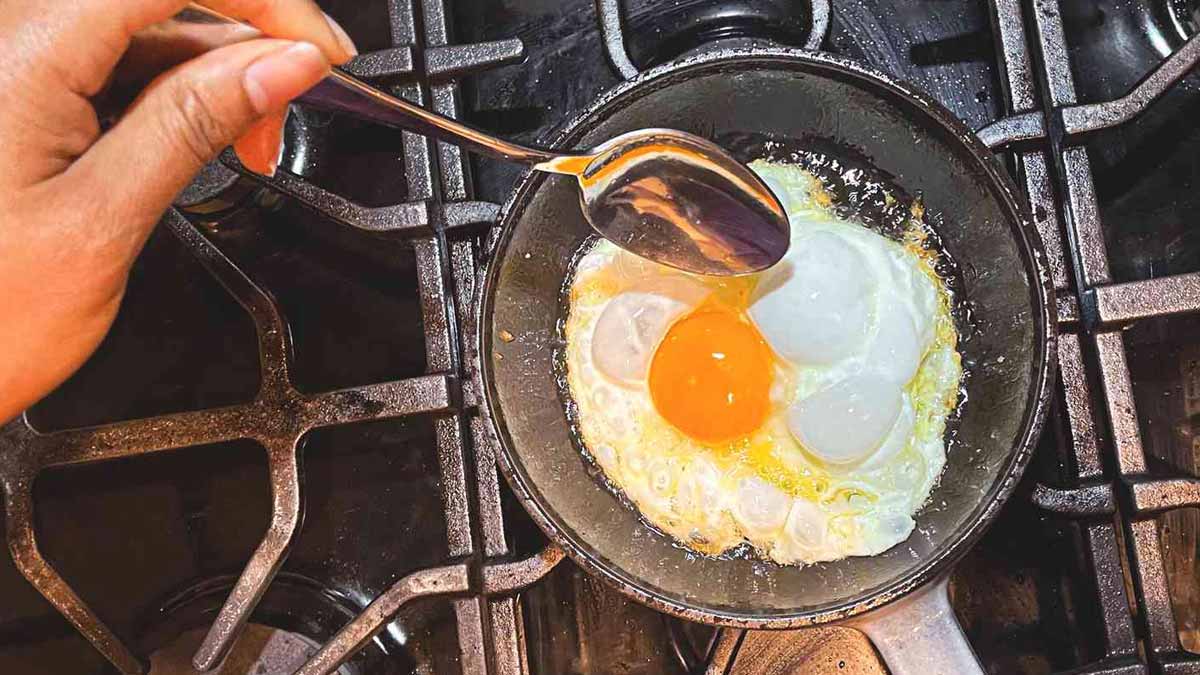Breakfast feels different when you change one habit. Trade the sizzle for calm heat and the result surprises. The texture turns soft, the flavor stays clean, and cleanup shrinks. Your morning moves faster while the plate still feels special. Use a simple swap that respects your eggs and lets fillings shine. Keep the pan for later and try the quiet route. The trick takes minutes, yet the taste lands bigger, brighter, and truly twice as good.
Why eggs feel softer, lighter and tastier
High pan heat can toughen proteins fast, so moisture escapes and texture feels dense, not plush at all. Gentle microwaving warms eggs evenly, and steam lifts the curds from within. You get small bubbles that hold together, and the bite stays tender without browning, which keeps flavors clean and bright.
Taste reads brighter because you skip extra oil or butter, while calories drop. You also avoid compounds that can form during hot frying, so the plate stays light, and more nutrients stay intact. Protein still satisfies, and the feel is gently smooth, which makes each forkful easy to enjoy now.
Speed helps on busy days, yet the result looks cared for and well made. The method keeps structure gentle, so fillings shine rather than compete for attention. Add herbs, then fold once, and serve right away for peak texture, because a soft set travels well for work or school today.
Step-by-step method for mornings
Whisk eggs with a splash of cold milk or water for forty-five seconds until smooth. A pinch of salt helps the mix set evenly while it stays tender. Stir in cheese you like, and soft feta or finely grated parmesan melt fast, so pockets of creaminess form without fuss.
Pour the mixture into a microwave-safe bowl or a small casserole dish. Power at around eight hundred to nine hundred watts for fifty seconds, then check the edges. They should pull from the sides while the center looks slightly moist, and resting briefly lets gentle heat finish the set.
If you prefer a firmer bite, use bursts of ten to fifteen seconds until the doneness suits you. Let it stand for a minute before folding, because that pause locks in tenderness. Serve with pepper or fresh chives, and swap fillings as seasons change so the routine stays fun, gently.
Nutrition wins that make eggs a balanced staple
Each serving brings complete protein for muscle repair, plus vitamin B12 and vitamin D for steady energy. Choline also supports brain health, while lutein and zeaxanthin help eye function over time. Satiety rises fast, so cravings ease, and steady fuel helps late-morning focus even when schedules run tight, daily.
Concerns about cholesterol deserve context, because guidance separates dietary intake from blood markers for most people. Those with special risks, including familial conditions, should follow medical advice, and portion sense helps. Gentle cooking avoids extra fat, so the plate stays balanced while numbers remain friendly to simple meal plans, too.
Food safety still matters, so handle eggs with care, use clean tools, and choose safe containers for heating. Pasteurized liquid options add reassurance for some homes, and quick heat reduces risk when done well. Add vegetables for fiber, then pair with fruit or whole grains, so breakfast feels rounded without extra chores.
Timing, texture and tips for repeatable results
Container size shapes height and tenderness, because a wider dish sets faster and stays thinner. Stir once halfway when you add hearty fillings, since even spread helps the set form as intended. Water lightens texture, while dairy adds richness, and a little grated cheese boosts savor without masking fresh flavors.
Use a vented cover to limit splatter, and stop slightly early since carryover completes the set cleanly. Resting for one minute smooths the curds, and folding adds air for softness and lift. Pan methods may brown eggs, yet the microwave keeps color pale, so delicate herbs and vegetables remain vivid.
Season inside the mixture and also on top, because layered seasoning reads lively and balanced on the palate. Pre-cook wet vegetables, like tomatoes or mushrooms, so the interior stays fluffy and light. Try smoked paprika, thin scallions, or torn basil, and keep a notepad for ratios you love, truly.
Kitchen efficiency, small costs and limits
You wash fewer tools, and you spend less energy, so the routine stays kind to bills and time. Commutes, school runs, and late starts still allow a warm meal that feels cared. Freezer vegetables and leftover chicken slip in easily, and the method welcomes small changes when your fridge looks bare.
Browning lovers may miss a seared edge, yet flavor stays bright because moisture remains in the tender set. Nonstick pans still shine for a classic French style, although the microwave beats them on speed. Use microwave-safe glass or ceramic, and avoid metal or cracked plastic, since safety matters most.
Plan batches of eggs during the week. Then reheat gently with a splash of water so steam restores softness. Label containers with a date, and keep portions sensible so meals feel light. The approach suits students and shared kitchens, and it helps caregivers, because reliable results land with less mess.
